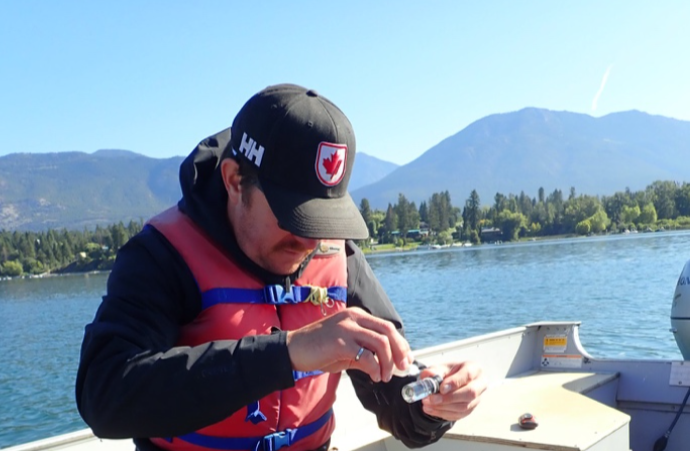A two-year-long study into the impacts of motorboats on Lake Windermere found a significant amount of environmental degradation.
Researchers looked at the impacts of recreational boating by compiling data from 2022 and 2023.
“This project was designed to investigate the long-term threats from boating activity to the lake’s health,” said Lake Windermere Ambassadors Program Manager Pam Saunders.
“Carrying capacity means the amount of human pressure from recreation and development that a water body can handle before it starts to deteriorate.”
Saunders said the results were concerning.
“There are several critical impacts from intensive boating on Lake Windermere, particularly impacting ecological values like fish, birds and other aquatic life,” said Saunders.
“The concerns of power boating on the lake are due to the lake’s shallow depth and soft bottom sediment.”
The lake has an average depth of 3.4 metres (11’3) and a maximum depth of 6.5 metres (about 21 feet).
“The lake is very prone to disturbances, especially from large wake boats,” said Saunders. “These boats create turbulence that can stir up sediment up to eight metres deep, so that’s a pretty big impact to Lake Windermere when you consider it has a max depth of 6.5 metres.”
According to the study, lake bed sediment being in a near-constant state of agitation can kick up a boatload of issues.
“When these sediments get stirred up, it will unlock previously stored nutrients like phosphorus, nitrogen, other contaminants and heavy metals,” explained Saunders.
“It releases them back into the water column and poses a threat to most aquatic life and contributes to harmful cyanobacteria algae blooms.”
Researchers found elevated levels of iron, manganese and nickel in the lake bottom, with some samples exceeding provincial health guidelines.
Saunders said the study places Lake Windermere in the ‘Very High’ to ‘Extreme’ category on the lake suitability index for power boating.
“That means it’s unsuitable for heavy power boat usage, large power boats and wake surf boats,” said Saunders.
“The study also established a theoretical carrying capacity of just 200 vessels. In peak tourist season, that capacity is often exceeded. That leads to overcrowding and a higher safety risk for all lake users.”
Saunders said the heightened contaminants in Lake Windermere also pose a risk to human health, as some communities use it as a source of drinking water.
Lake Windermere’s location near the headwaters of the Columbia River Wetlands means that issues in the lake will flow downstream.
The Lake Windermere Ambassadors cannot mandate rules and regulations, but they can offer official recommendations to decision-makers, such as the RDEK and provincial government.
“The study recommends creating a comprehensive lake management plan with involvement from Indigenous Nations, local governments and stakeholders,” said Saunders.
“It recommends safeguarding mussel beds, fish spawning areas and wetlands by applying to the federal government to create an aquatic ecological reserve.”
Other recommendations include the creation of a voluntary code of conduct, restricting motorized boats at important times of the year such as fish spawning and bird nesting seasons, and creating no-wake zones and motorized boat-free areas.
“We want to find a balanced way for people to enjoy recreation on the lake,” said Saunders.
“We act as advisors to decision-makers, so we plan to use this study as a guide to create a balanced late management approach to address the over-crowding and negative ecological impacts.”
You can see the full study here.
Something going on in your part of the Kootenays you think people should know about? Send us a news tip by emailing [email protected].




